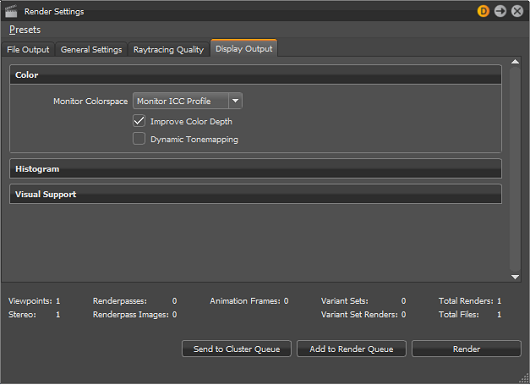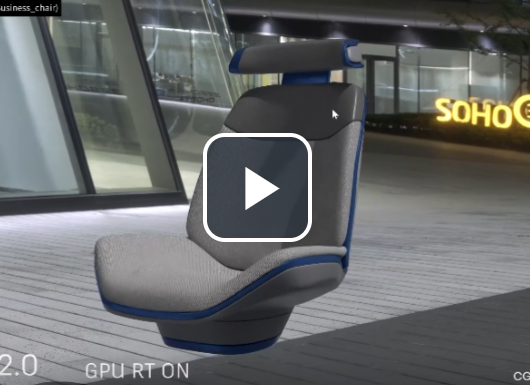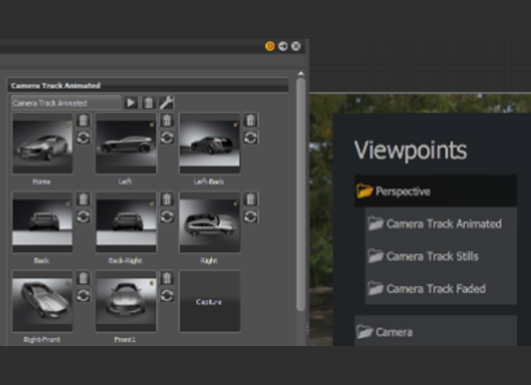VRED 2022.3
Learn about new features and improvements in this release of VRED. For technical details and bug fixes, see the 2022.3 release notes and recommended system requirements to ensure Autodesk VRED products are running to their potential.
What's New in 2022.3
Click on the cards below for further information.
For Windows users, 2022.3 requires an NVIDIA RTX driver v.471.11 or later, but a 471.68 or later is recommended for GPU raytracing.
For Linux users, 2022.3 requires 470.94 or above for GPU raytracing.
Video captions: In VRED 2022.3, we have added several improvements for data handling, rendering, and streaming workflows.
For data preparation, we improved the Decore functionality, so you are able to create B-sides within the tool. You can select between two different decore modes and decide how to deal with transparent objects. Like here, where I am setting the wall thickness and the inner rips and additional objects as B sides, as these components are not visible. So, you can make the non-visible parts invisible without losing them already.
Under Show B Sides, you can make them visible, delete them completely, or set them back to A side again. These additional functions give you more flexibility in the visualization and data preparation process.
For VR users, we improved the touch behavior of the VR hands. Now it’s much easier to trigger touch sensors or the VR menu with your VR hands, which makes the VR experience more fluent and natural.
When being in a Collaboration, we added a Pause button to the Collaboration Window. This gives you the option within a Collaboration with VR users attending as well, to render out a Raytraced Antialiased image in Desktop mode.
Now you can also go into a view of a VR user, the so-called spectator view. Pause the collaboration and render out a raytraced antialiased image from out of this view. Pressing the Pause button again, will switch you back to the collaboration session, instantly.
For raytracing, we improved the performance when being in Isolation mode. Now you have a much better framerate in Isolation mode!
We also improved the Stream App. Now you can show only selected Viewpoints and Variant Sets to the Stream App UI. Therefore, we added the “Show in VR Menu and Streaming App UI” option within the Variant Set Editor and within the Camera Editor. So, you are able, for example, to show only a simplified and basic set of functionalities to your stream. Thanks for watching the video!
2022.3 Additional Enhancements
These are some of the improvements found in 2022.3.
Collaboration
- Dialogs Blocking Python Scripts - Removed dialogs that blocked users joining a collaboration session via a Python script from immediately downloading a scene file that was uploaded to the collaboration server, connecting to the session server, or uploading scene containing an older BRDF mode.
Documentation
AU VRED Sessions - Added a section containing content from Autodesk University VRED sessions, along with links to the Deep Dive Seesions and the 2021 AIF Keynote.
Homepage - Updated the look and functionality of the homepage to make it faster and easier to find content.
Materials
- AxF 1.8 - Updated the AxF library to version 1.8 and added support for energy preserving SVBRDFs.
Raytracing
Layered Glass on Glass - GPU raytracing is now supported for Layered glass on glass.
Rendered Layered Materials - GPU raytracing a Layered material now provide results consistent with CPU raytracing.
Rendering
Albedo and Camera Normal - Add Renderpass API parameters for the Albedo and Camera Normal Auxiliary Channels.
Color Management - Added the color management options found in the Render Settings > Display Output tab of VRED Professional to VRED Design. In the Color section, you will find Monitor Color Space with options for Simple Gamma, sRGB IEC 61966-21, A.RGB 98, and Monitor ICC Profile, as well as the new Simple Gamma slider.
Substance
Preset Behavior - Added the Substance preference, Preset Behavior, for setting the behavior used when dealing with values not contained in a Substance preset. Select an option to determine whether these values are stored in the preset or reset to their default values.
Apply & Reset - Graph input values not contained in the preset are reset to default values.
Apply & Merge - Graph input values not contained in the preset are NOT reset.
Web Interface
- Loading State - A loading animation appears when a new project is loading and a progress dialog appears when the render mode is changed. Variant sets and viewpoints are reloaded when a new scene has been loaded.





